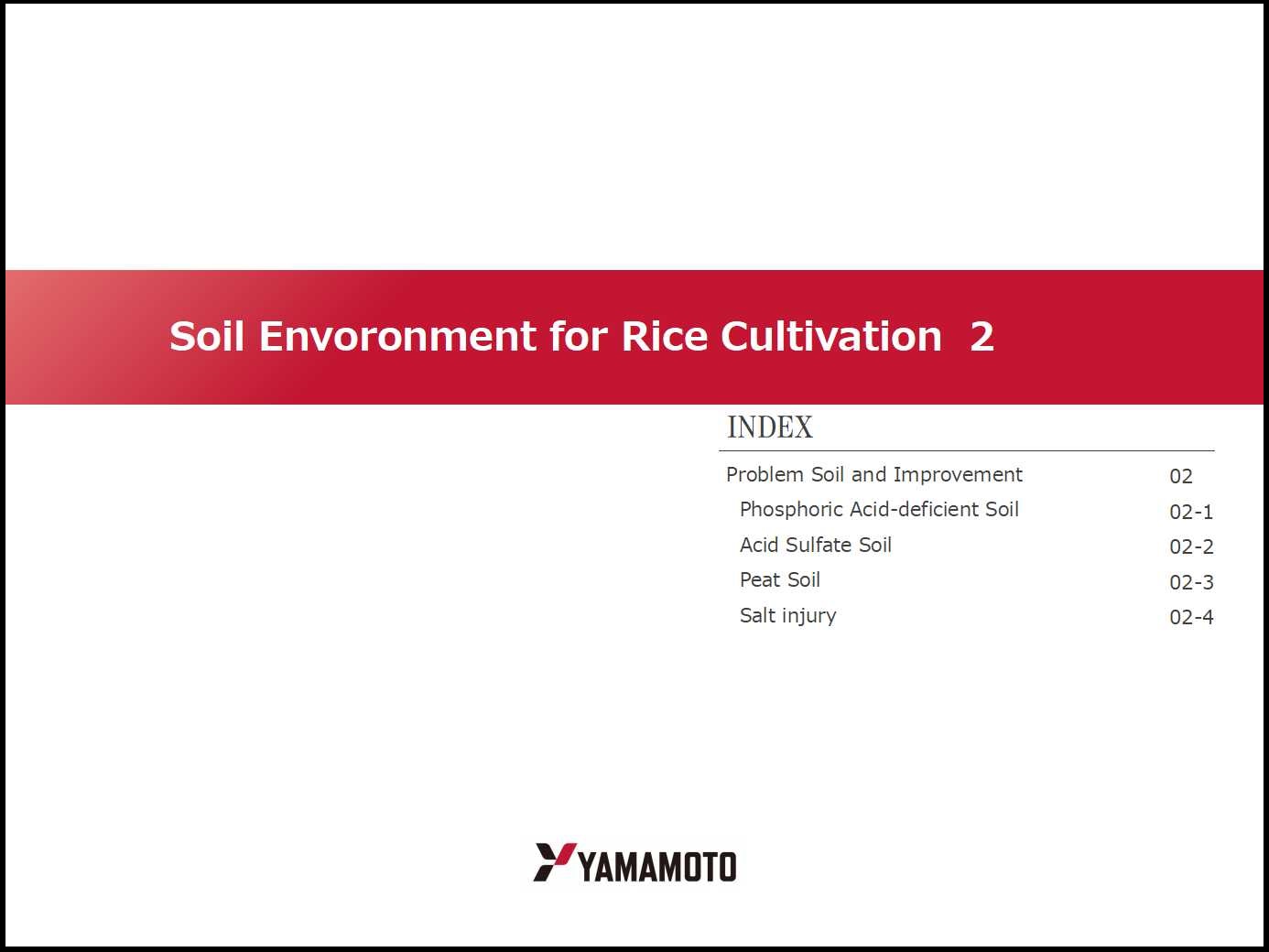13. Soil Envoronment for Rice Cultivation 2
- INDEX -
Problem Soil and Improvement
Phosphoric Acid-deficient Soil
Acid Sulfate Soil
Peat Soil
Salt injury
Problem Soil and Improvement
There are problem soils whose deficiency damages the growth of rice and limits production yield.
We will examine these problem soils and improvement thereof.
Phosphoric Acid-deficient Soil
The supply source of phosphorus is limited to apatite or phosphorite, with little else coming from weathering of primary minerals. Furthermore, it becomes unavailable by forming slightly soluble salts together with iron, alminum, or other organic substances in the soil. Under submerged water, however, phosphoric acid sometimes becomes available. Phosphoric acid-deficient soil seems to exist universaslly.
Basically, phosphoric acid-deficient soil has but a small amount of available phosphoric acid. It is generally accompanied by such characteristics as high acidity, low inclusion of base, and large absorbig coefficient of phosphoric acid. Phosphorus also interacts with other elements.
Improvement should take the above facts into consideration. In the case of volcanic ash soil, the amount of phosphoric acid (P2O5) to be used is 100 - 200 kg per hectare, and it is 60 - 80 kg for other problem soils.
Acid Sulfate Soil
This soil is rich in ferric sulfide (mainly pyrite-FeS) deposited from seawater in reductive condition. Through land draining, however, ferric sulfide is oxidized and forms sulphuric acid and creates storog acidity.
Rice will be damaged by the acidity and aluminum during its infancy of growth. The soil will have an increased reduction process due to its relatively high content of organic matter, and formation of carbonic acid, organic acid, ferrous iron, hydrogen sulfide, and the like will reach the point where they can be harmful. It generally contains much salt and lacks effective phosphate, such that it has a high level of nutrient deficient injury. The following countermeasures should be considered:
1) Elimination o salt and other harmful elements by means of drainage.
2) Correction of acidity by the use of time and containment of alminum and iron activation.
3) Prevention of phosphoric acid deficiency by increased use of phosphatic fertilizer.
4) Use of rice with high resistance against low phosphoric acid conditions.
